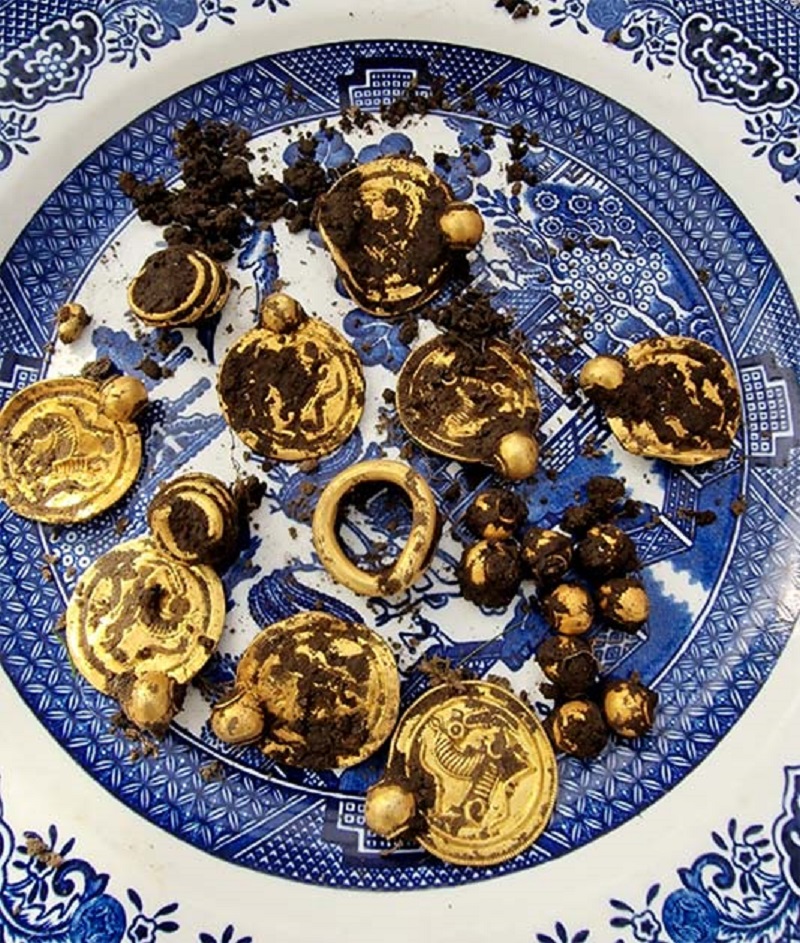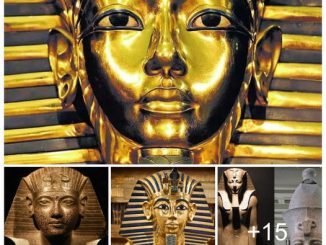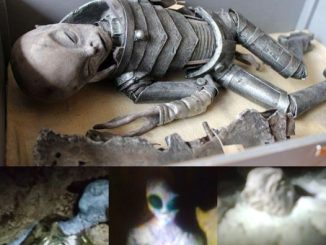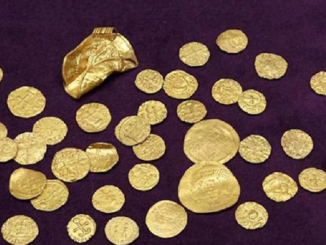On the Norwegian island of Rennesøy, an impressive treasure trove of gold antiques, weighing more than 100 grams, was discovered. The cache includes nine coin-like gold pendants or medallions, with rare horse symbols, ten gold beads, and three gold rings! Of considerable value to this day, these finds have been described as Norway’s “gold discovery of the century.”
An unusual find: Huge amount of Norwegian gold
According to a press release from the Museum of Archeology in Stavanger, Ole Madsen from the Museum of Archeology at the University of Stavanger, commented that “finding so much gold at once is unusual.”
The discovery was made by 51-year-old metal detectorist Erlend Bore, from Sola, during an evening walk on the advice of his doctor, who bought his first metal detector last summer. as a hobby. He had permission to carry out this hunt on private land and after his discovery he contacted the local council who contacted the museum.
“At first I thought I had found gold-coated chocolate money or play money,” Bore said. These findings date to the 6th century AD, meaning they are 1500 years old.
Erlend Bore, a metal detector enthusiast, stumbled upon one of Norway’s largest gold treasures found in the last 100 years.
According to Norwegian law, the use of metal detectors is permitted when the land owner has given express consent and it complies with the principles set out in the Norwegian Cultural Heritage Act 1978. Objects with coins dated before 1537 and coins minted before 1650 are both classified as state-owned artifacts and need to be reported to the authorities.
A pre-cleaning hoarding collection. ( Museum of Archeology/UiS )
Bracteates: Flat, coin-like gold pendants
The round and flat gold pendants discovered by Bore look like coins but are actually better known as ‘bracteates’. Bractate is a flat and delicate gold pendant that features a stamped design on one side. In many discoveries, bract collections often show a variety of motifs. However, in this particular case, all nine bracts have identical depictions.
“A thin sheet of gold was pressed down onto a bronze stamp to create a pattern on it,” Dagfinn Skre, Professor of Archeology at the Museum of Cultural History in Oslo, told Science in Norway.
A long time ago, these nine bracts used to form an eye-catching necklace, as revealed by Håkon Reiersen, associate professor at the Archaeological Museum in Stavanger.
This represents the necklace’s former appearance, which consisted of nine slender gold medallions called bracts. (According to Eli Gil Bell / Museum of Archeology/UiS)
“This jewelry was made by skilled goldsmiths and was worn by the most powerful people in society. It is rare to find so many bracts together. We haven’t had any findings comparable to this since the 19th century,” Riersen added, according to the same report by Science in Norway.
The meaning of burial: A time of suffering and upheaval
The obvious question that comes to my mind is – why are so many bracts buried in almost the same area? And what do they represent?
This period in Norway (and wider Scandinavian history) is known as the Migration Period (transitioning to the Merovingian Age around 550). It was a period marked by crises, including crop failures, deteriorating climatic conditions, and epidemics. In fact, large-scale migrations at this time led to the final collapse of the Western Roman Empire in 476 AD, The Daily Mail reported.
Examining the location of the Rennesøy treasure discovery and comparing it with similar finds, Reiersen posits that the golden treasure may have been hidden for safekeeping or was likely offered to the gods at a time when urgent.
About 1000 bridging bars have been excavated in Scandinavia, but the ones discovered in Rennesøy are considered to be of an unusual type, according to a statement by Sigmund Oehrl, Professor at the Museum of Archeology in Stavanger, who specializes in Bridging bars and their symbols.
Typically, the popular image on these circular gold plates depicts the god Odin healing the ailing horse of his son Balder. According to Oehrl, this myth was important as a symbol of rejuvenation and rebirth during the Migration Period. It is believed that it brings protection and good health to its owner.
However, the bractates in Rennesøy have a simpler depiction, featuring just one horse. “The motif found on these bracts is different from what has been observed on other gold pendants to date,” Oehrl commented in the press release.
One of nine Norwegian gold pendants or bracelets found in Rennesøy. ( Museum of Archeology/UiS )
“On these gold pendants, the horse’s tongue protrudes, its slumped posture and twisted legs indicate that it is injured. Just like the Christian cross symbol that was becoming popular in the Roman Empire at the time, this horse symbol symbolized illness and suffering, but also the hope of a cure. healing and new life,” Oehrl concluded.
Norse Mythology: Stories of Norse gods, heroes, beliefs, rituals & Viking heritage
The joint burial of horses and people demonstrates the Vikings’ bond with their animal friends
In short, it is likely that the bracts were gifts given by local kings to their most trusted associates. In this way, the bracts may have functioned as a prestigious form of recognition, effectively representing the individuals the king valued most throughout the region.
After comparing similar finds in Denmark during this period, it is likely that over the years families may have accumulated collections of bracts thanks to their long-term loyalty to the kings. specifically. Therefore, these are signs of elevated social status, in addition to their intrinsic value.
Above: Right: The trove of gold was photographed shortly after Erlend Bore found it underground with a metal detector. Source: Museum of Archeology/UiS






